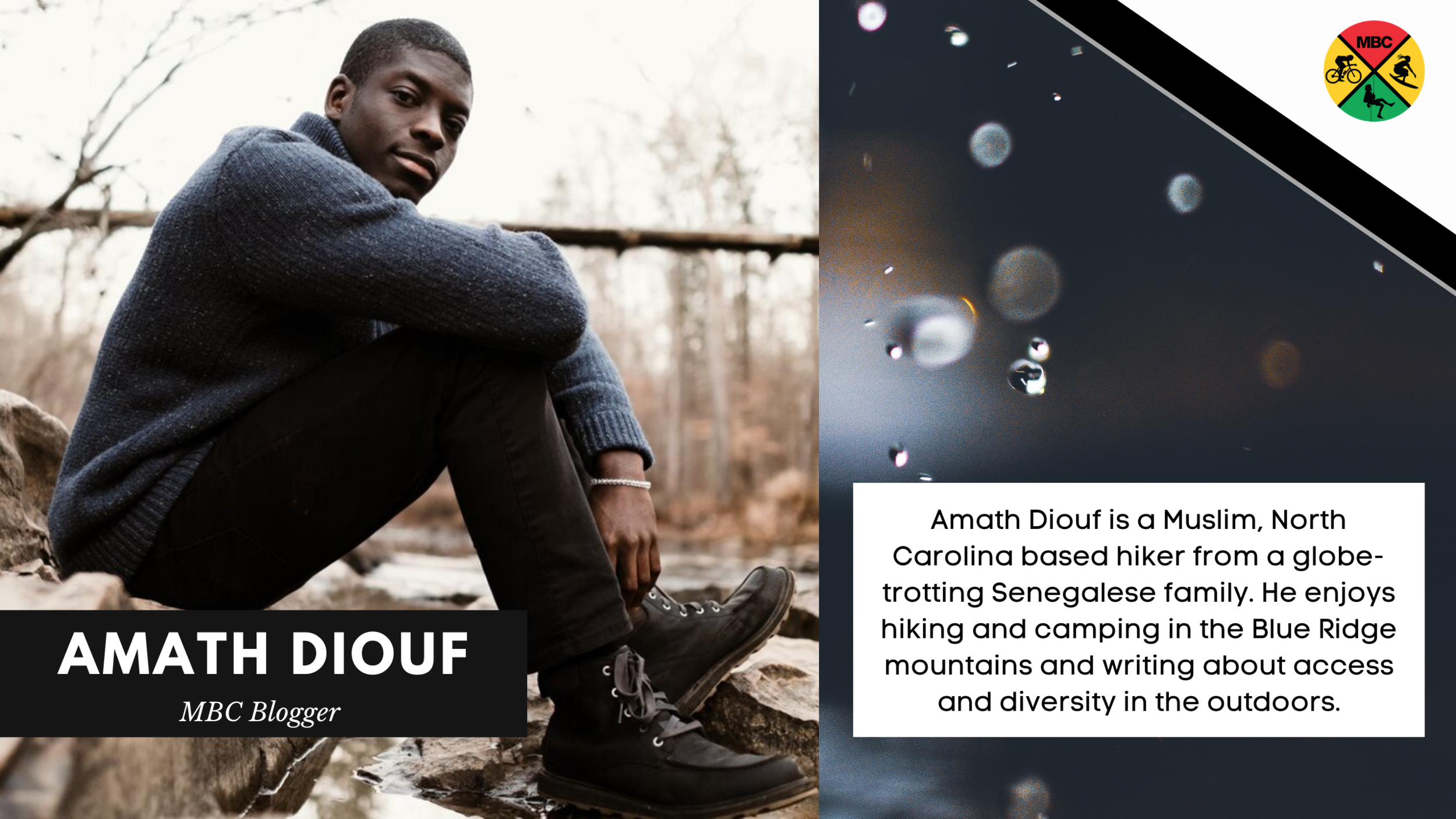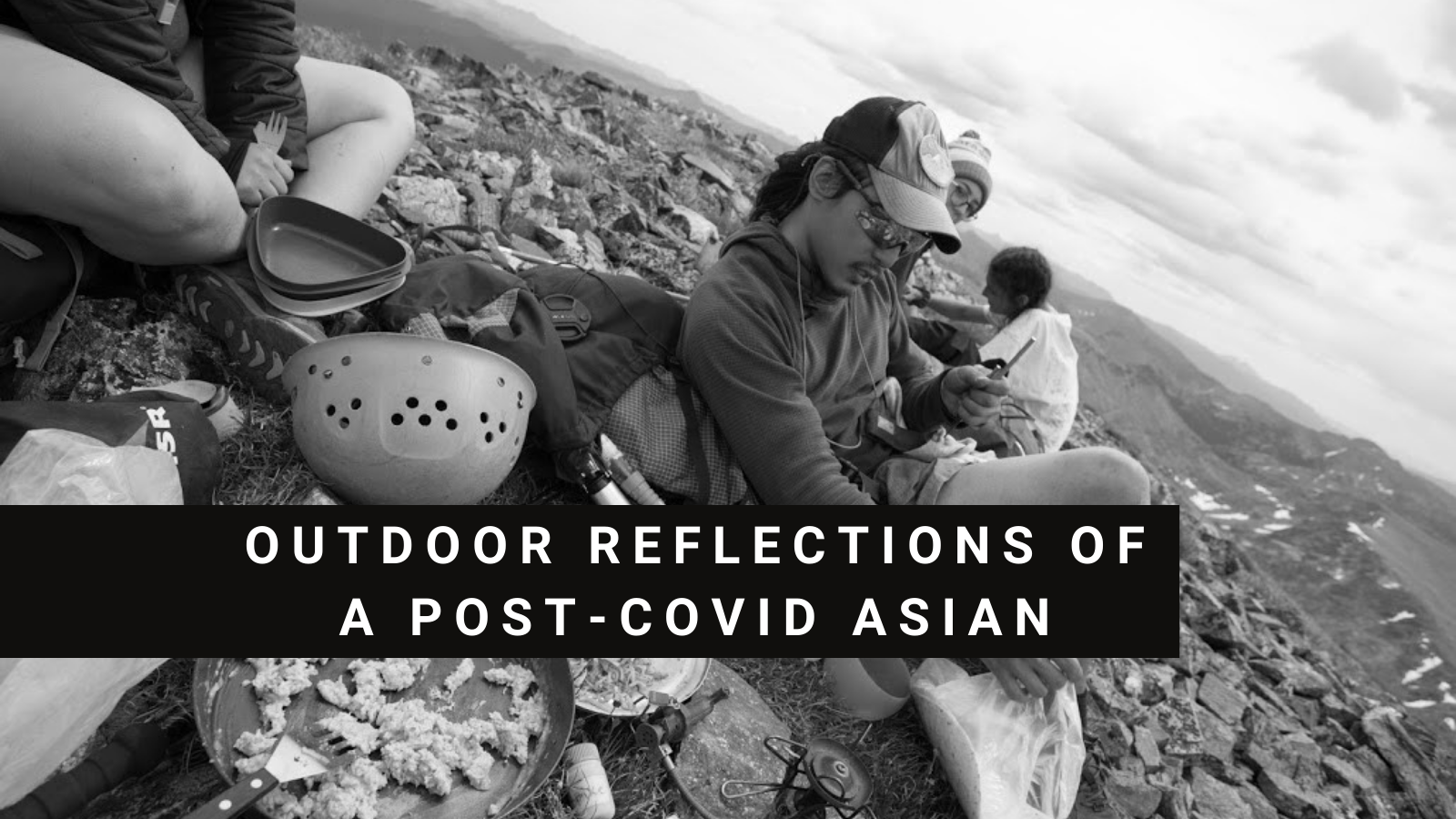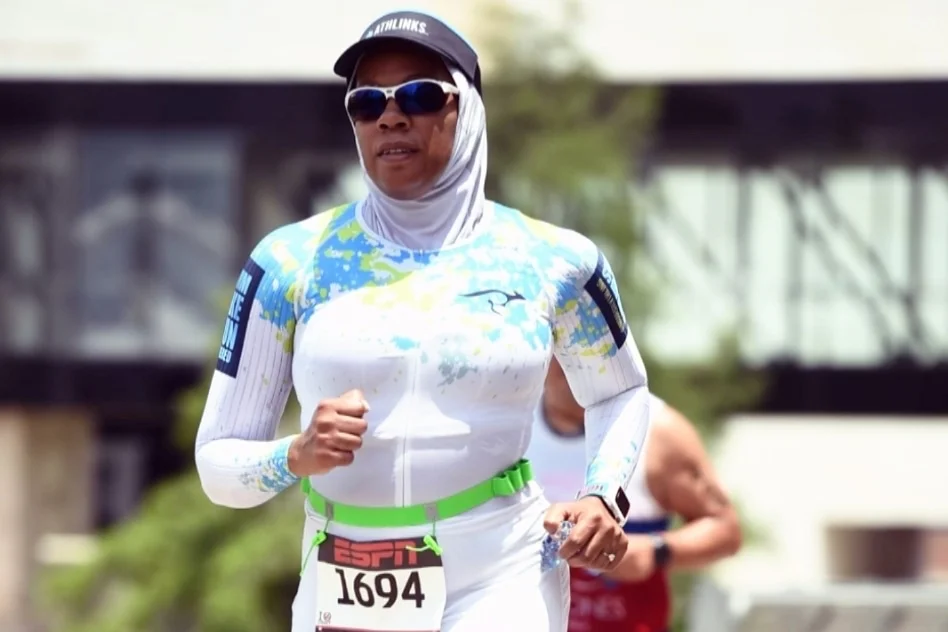6 Ways to Get Outside with BIPOC Immigrant Parents
Getty Images
“Go play outside” is a classic line often used by parents trying to coax their kids to trade the game controller for time in nature. I moved to the U.S. from France when I was 2 years old. I’m thankful that my parents, originally from Senegal, pushed us to spend time outside and that we had access to outdoor spaces where we felt safe and free to explore. My parents also took us to national parks and on international trips to nurture our love of nature and travel.
As the years have passed, the roles have reversed and it’s now my brothers and I who encourage our parents to get outside. Immigrating to the U.S. is never easy. There are many barriers that make life in America challenging. By spending time in the outdoors with our immigrant parents, we can help them embrace themselves, time with their loved ones and the beauty of nature. But what if your parents aren’t exactly interested? How do you convince them that the outdoors isn’t just “for White people”?
I reached out to several other children of immigrant parents, in order to gain some insight. Here are six ways for you to get outside with your immigrant parents.
1) Stay local & plan a beginner’s hike on flat terrain
If you love the outdoors, it’s easy to be convinced that your parents will too! Or that they’ll be just as excited about an 8-mile hike on the Appalachian trail as you are. Wrong! It’s natural to want to leap into a long hike or a full day itinerary at a national park - especially if the reward is a stunning overlook or an Instagram-friendly waterfall at the other end. Please don’t do this to your parents!
It’s nice to have these ambitions, but when it comes to getting our parents outdoors, proximity is key! Re-discover green spaces in your area. The Alltrails app is a great resource for finding nearby hikes and iNaturalist makes it easy to use your smartphone to identify local plants, insects and birds. With photo sharing options, detailed descriptions, and community feedback, hiking apps can help your family explore local trails or parks close to home. And yes, we’ll continue to advocate for additional safe green spaces in working class communities of color.
“The way we spend time in the outdoors is heavily influenced by whiteness & western individualism”
“As a former bilingual outreach coordinator for Stewards of the Coast and Redwoods, I’d say the first step is exposure and having knowledge of recreational parks, whether they are state or locally run,” said April Reza. “This mostly happens via word of mouth, as that is the most trusted source of information in migrant communities. But also from an organizational standpoint, PR in the language your community speaks is key. Thankfully now with the internet, information can become more accessible, but for old school parents, hard copies are a must.”
iStock photo
2) Ditch the gear talk
Do you have parents who wear traditional attire? Instead of forcing them to lace up expensive hiking boots, encourage them to get outside in clothing that helps them feel the most comfortable. That means wearing accessible non-technical clothing. Sandals and salwar kameez? No problem. Does your Hooyo prefer jilbab and sneakers? Not an issue. Your parents don’t need to spend hundreds of dollars on outdoor gear, base layers or high-end jackets in order to enjoy a walk at a local park or trail. Will white people stare at you or treat you as if you are doing the outdoors wrong? Probably. But the idea is to remove barriers between your parents and the outdoors - not add them.
We want everyone outdoors! This means promoting any attire that will get you and your family outside safely. And no, you don’t need hiking boots to try a local hike (walk) on flat terrain. Brush off the weird glances from those expecting you to wear outdoor gear that breaks the budget. As a child of immigrants, “hand me downs” were the norm. In a world where there’s a constant push to purchase the latest gear, I encourage everyone to wear what you have in your closet!
If you are looking for accessible gear, Khadija-Awa Diop, a child of Senegalese immigrants, had the following advice. “It doesn’t have to be fancy or brand name, it just has to make you feel comfortable enough to go and explore,” said Khadija. “My brother gifted my mom some really nice sneakers so we could ditch the gear talk and just get outside. Even though they’re not made specifically for any type of sport or activity, they allow us to bring my mom outside.”
3) Bring the entire family
BIPOC/BAME* folks are more likely to live in multigenerational homes than our white peers. Why not lean into that?
Having more than one generation under one roof is pretty common among immigrant families. Differences in age can make it challenging to find an activity that everyone likes, so why not try something new? Enjoying a local easy hike (walk) is an opportunity for every member of your family - from the youngest to the oldest - to fall in love with nature.
Instead of viewing family members as ‘slowing you down, or ‘not fit or athletic enough’, try to shift your perspective. The way we spend time in the outdoors is heavily influenced by whiteness & western individualism. We want to hike fast, finish quickly, and demonstrate our athleticism to our friends or to ourselves. Talking too much and singing or playing music are viewed as violations of trail etiquette. Taking up too much space is viewed as a violation of trail etiquette. Multigenerational families on the trail - especially those not dressed in head to toe Patagonia - are viewed as obstacles blocking the flow of traffic. Why though? “Individuality and rugged individualism is such a Western concept, and sometimes a very lonely one,” said Nina Jalili, eldest daughter to Iranian-American immigrants. Instead of viewing that as the only way to spend time in nature, what if we considered alternatives, to include slow hiking, not finishing and spending time with grandparents, cousins and little siblings.
Yes, these are the same family members whose traditional beliefs are often rooted in colorism, anti-blackness, misogyny, respectability politics and queerphobia. But they’re also the loved ones who cooked for us, cut up fruit for us, spoke to us in our heritage language, and were often our first glimpses of the outdoors - as they tended gardens, fished, peeled lanzones, or taught us how to ride a bike. Life is complicated and we aren’t recommending that you ignore your mental health by spending time with toxic family members. We are advocating in favor of including family members when and where possible.
“Depictions of the outdoors in the stories my parents told were awe-inspiring to a younger me,” recalled Tim Docil, a child of Filipino immigrants. “I think it created a positive feedback loop where I would be curious about my own backyard, speak with my parents about my discoveries, hear about the world my parents were familiar with and that would spark more curiosity.”
So what does it look like to get outside with your family?
*BIPOC stands for Black, Indigenous and People of Color. BAME represents Black, Asian and minority ethnic.
4) Take up space
Getting outside with immigrant parents may first require unpacking your own biases—especially if you grew up in the U.S. where mass media and advertising narrowly define the ‘proper way’ to spend time outdoors. It can feel uncomfortable to take up space in a primarily white environment. People may stare at you. They may not be welcoming. They may decide you don’t belong. So what does it mean to take up space on the trail as a Black, Indigenous or Person of Color? Or as a BIPOC disabled person? Or as a visibly queer BIPOC hiker? Or as all three? Now add conservative family members to the mix!
It can include speaking your heritage language without feeling the obligation to switch to English for white passersby, laughing loudly, playing music, wearing traditional clothing or ‘ethnic’ hairstyles, walking very slowly, not finishing, centering the experience around family, food and music instead of around “shredding,” “sending,” “exploring,” or “conquering.”
Then there’s taking up space when society has already passed judgment on your body for being fat, or disabled or Black—and therefore criminal and out of place. Taking up space in the outdoors can also involve accessing public lands for foraging, hunting, fishing, cultural or religious purposes as a tribal member, for those with Indigenous and Immigrant roots! When’s the last time that was the focus of an outdoor ad campaign?
Photo by Joice Kelly on Unsplash
Sometimes you have to ignore trail etiquette - which is passively hostile towards people who aren’t white, who aren’t able bodied, who hike in groups, who use mobility aids, who walk with young children or the elderly, who need amenities—restrooms, benches, water stations, trashcans—greater than what they can carry on their own back, who speak languages other than English or who “don’t look the part.”
By now, you’ve probably guessed, there’s no one way to take up space in the outdoors as a person of color.
“We would caravan and everyone would bring something to eat, sit on, use for entertainment.,” said Jalili. “We would bring tomback or tabla (traditional drum) and someone always knew how to carry a beat or tune. We would sing, dance, play cards, even recite poetry and spoken words in Farsi. For many Iranians, being outdoors is their livelihood, entertainment, place of meditation, mindfulness and self-care. It’s a tradition I happily have adopted and am trying to foster with my three sons and family. Living off the land, stewarding it, caring for it, sustaining it in a symbiotic relationship with the earth, can never be taken for granted.”
5) Don’t worry about finishing
The goal shouldn’t be to get anywhere. Even if there are stunning views at the turnaround point, it’s important to focus on the journey and the act of spending time outdoors with your family. Birding is one way to slow down and be in the moment that can involve the entire family. That doesn’t mean you should abandon mountain biking or rock climbing. It just means there are many ways to be present in the outdoors—and some are more accessible for your family members. You can download Audubon Bird to get started.
Spending time in nature together may encourage your elders to share their own memories. They might even surprise you with how much time they spent playing (or working) outside when they were children. You’ll learn more about what shaped their beliefs - including potential fears, biases and prejudices - towards the outdoors. It’s an opportunity for you to listen and learn instead of shaming them for having cultural or mental roadblocks.
If they worry about your love of solo backcountry trips, use your time in nature together to actively listen to why they view it as dangerous or unsafe before sharing why the outdoors is so meaningful to you. Even if their response is ‘wait until you’re married’ or log kya kahenge, at the very least, you’ve taken the time to hear them out. And you’ve organized a nature excursion that hopefully felt safe to them.
A slow hike (walk) with family is also a good time to teach by modeling Leave No Trace principles. Teach by example and do not shame or police family members for lack of knowledge. Leave No Trace is a social contract, not a moral code. It is not something we’re born with and it’s not the same across every culture. In the U.S., having access to outdoor knowledge like LNT principles is a sign of proximity to whiteness and privilege. Use your privilege for good.
6) Be patient when you run into obstacles including cultural norms & mental roadblocks
Be patient
Even if you have to ask 10 times and they say ‘no’ each time. Let your family know how much it would mean to you to spend time with them in nature. Try starting with your cousins or siblings who are closer to you in age.
Be patient
Even if they say hiking or camping is for white people. They’re not entirely wrong. Nature is for everyone, but outdoor culture in the U.S. is very white and not always welcoming of non-white individuals.
Be patient
Even if they aren’t interested in dealing with the heat, cold, insects or being in the woods. Compromise and choose a location that is accessible and beginner friendly
Be patient
Even if they didn’t work this hard and sacrifice this much for you to spend your free time sleeping on the ground.
Be patient
Even if they’re worried about their weight or not having the right clothes or not looking the part.
Side note: Don’t use diet culture or weight loss to guilt trip family members into spending time outdoors. When I encourage my family to visit a local park near their home, I mention how spending time in nature and going on walks can be a stress reliever.
Life seems to pass us by, let’s take time to slow down and reconnect with our loved ones. If you’re a child of immigrant parents, I’m sure you were told countless stories of how they had to grow up quickly and put in countless hours at work and at home to care of you. They lived a life full of responsibilities so that you could reap the benefits. We can never repay the sacrifice and love that our parents had and continue to have for us, but we can work on mending differences in our beliefs and values along the way. Maybe the generational gap won’t ever be bridged entirely, but the outdoors is a great place to put in the work.














Spending time outdoors and starting a family can seem like they are at odds first, but it’s possible to maintain outdoor hobbies while also being an involved parent.